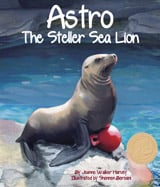Alignment to Standards for WA

| Grade | Number | Standard |
|---|---|---|
| 1 | 3.1.1 | Understands and uses maps and globes to identify major bodies of water and continental land masses. |
| 1 | SS-1.3.1.1 | Understands and uses maps and globes to identify major bodies of water and continental land masses. |
| 1 | SS-1.3.1.1b. | Explains how maps and globes can be used to locate the continents where families live. |
| 1 | SS-1.3.2 | Understands human interaction with the environment |
| 2 | SS-2.3.1 | Understands the physical characteristics, cultural characteristics, and location of places, regions, and spatial patterns on the Earthês surface |
| 2 | SS-2.3.1.1 | basic mapping elements such as symbols, compass rose, labels, and a key to read and construct maps that display information about neighborhoods or local communities. |
| 2 | SS-2.3.2 | Understands human interaction with the environment |
| 2,3 | 2-3 LS1B | Animals have life cycles that include being born; developing into juveniles, adolescents, then adults; reproducing (which begins a new cycle); and eventually dying. The details of the life cycle are different for different animals. |
| 2,3 | 2-3 LS2B | All ecosystems change over time as a result of natural causes (e.g., storms, floods, volcanic eruptions, fire). Some of these changes are beneficial for the plants and animals, some are harmful, and some have no effect. |
| 2,3 | 2-3 LS2D | Humans impact ecosystems in both positive and negative ways. Humans can help improve the health of ecosystems so that they provide habitats for plants and animals and resources for humans over the long term. |
| 3 | SS-3.3.1.1 | Understands and applies how maps and globes are used to display the regions of North America in the past and present. |
| 3 | SS-3.3.2 | Understands human interaction with the environment |
| 4,5 | 4-5 LS1A | Plants and animals can be sorted according to their structures and behaviors. |
| 4,5 | 4-5 LS1B | Plants and animals have different structures and behaviors that serve different functions. |
| 4,5 | 4-5 LS1C | Certain structures and behaviors enable plants and animals to respond to changes in their environment. |
| 4,5 | 4-5 LS1D | Plants and animals have structures and behaviors that respond to internal needs. |
| 4,5 | 4-5 LS2E | All plants and animals change the ecosystem where they live. If this change reduces another organismês access to resources, that organism may move to another location or die. |
| 4,5 | 4-5 LS2F | People affect ecosystems both positively and negatively. |
| 4,5 | 4-5 LS3B | Plants and animals inherit many characteristics from their parents. Some inherited characteristics allow organisms to better survive and reproduce in a given ecosystem. |
| 4,5 | 4-5 LS3C | Some characteristics and behaviors result from an individual plantês or animalês interactions with the environment and are not passed from one generation to the next by heredity. |
| K,1 | K-1 LS1B | All plants and animals have various external parts. |
| K,1 | K-1 LS1D | Different animals use their body parts in different ways to see, hear, grasp objects, and move from place to place. |
| K,1 | K-1 LS1E | Animals have various ways of obtaining food and water. Nearly all animals drink water or eat foods that contain water. |
| K,1 | K-1 LS2C | Humans can change natural habitats in ways that can be helpful or harmful for the plants and animals that live there. |
| K,1 | K-1 LS3B | There are many different types of living things on Earth. Many of them are classified as plants or animals. |
| K,1 | K-1 LS3C.1 | Describe several external features and behaviors of animals that can be used to classify them (e.g., size, color, shape of body parts). |
| K,1 | K-1 LS3C.3 | how pairs (males/females) of plants and/or animals are similar to and different from each other (e.g., cats and dogs both have four legs, but many dogs have longer snouts than cats). |